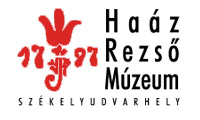Kovács Petronella (szerk.): Isis - Erdélyi magyar restaurátor füzetek 1. (Székelyudvarhely, 2001)
T. Bruder Katalin: Kerámiarestaurálás I.
Petronella KOVÁCS Cleaning of painted surfaces The cleaning of painted surfaces is one of the most spectacular steps of restoration both for specialists and the public since the removal of a relatively thick dirt from the surface leads to very impressive results. Not to mention the vivid colours surfacing from under old, darkened coatings and perhaps the appearing of motives that were covered until then. Being so spectacular, cleaning is the most popular but, at the same time, perhaps the most dangerous intervention. Cleaning, the removal of a layer is an irreversible process, so the necessity of intervention is to be considered each time. Damage can be done even by the mechanical removal of superficial impurities. The loosely bound pigments can be damaged, the surface can be scraped so it is suggested to use a magnifying glass or a microscope. Superficial impurities can be removed by liquid cleaning materials (tenzides diluted in water), which, however, effect not only the surface. They can permeate into the paint layers and the alkaline or acidic solutions can cause lasting damages to their constituents (pigments, binding agents). Aqueous solutions of complex forming agents - salts of EDTE with two or four sodium atoms and the water soluble salts of citric acid as tri-sodium citrate, triammonium citrate etc. are widely used for the removal of superficial impurities. Elsing complex forming agents one has to take care of paint layers that contain pigments of high copper and iron content in little binding substance because the complex formers can quickly bind copper and iron ions. Old and cracked resin coatings and oily binding substances can also be sensible to water. It is suggested to use the foam, gelled or pasty varieties of the cleaning substances to decrease permeation. It is important to know the context and composition of the layer structure of the art objects at the removal of coatings and secondary paint layers. Restorers can also investigate them with infra cameras, in UV shots and polished crosssections. Another important task is to determine the type of the binding agent both of the substance to be removed and the layer to be preserved, since it helps to choose the appropriate cleaning substance. Each substance can be characterised by the solubility parameter calculated from the force acting between the molecules. Interaction happens only between substances that have identical or similar solubility parameters, that is a similar substance can only dissolve a similar substance. Test series of solvents and solvent mixtures are provided for restorers to help the delimitation of the solubility range of the unknown substance to be removed and the determination of the probable binding material. They can be illustrated in a Teas triangular diagram. With this, solvents can be chosen or mixtures can be composed the solubility points of which fall within this range and which will be suitable for the cleaning and the removal of the unnecessary layer. Choosing the solvents, their penetration and retention properties and viscosity must also be checked. One must be very careful at every cleaning process, since the solvents effect not only the surface and the substance to be removed but also the deeper layers they can reach through fissures. Petronella Kovács Wood and furniture restorer artist Magyar Nemzeti Múzeum Head of the department of object restoration University of Fine Art of Hungary Györk MÁTÉFY Flags, their conservation and restoration Flags, especially the painted or embroidered ones pose one of the most complicated tasks to textile conservation and restoration. The raw materials are easily decomposing organic materials as silk or flax, and time, use and storage all leave their traces on them. Regarding the shapes of flags, they resembled the modern ones already in the 9th century. They are usually rectangular and the textile is fixed directly on the flag-pole, that is they compose a single unit. The large ones were fixed to rings, sometimes to mobile cross-bars and hauled up on the flag-pole with a cord. Banner as the use of a symbol was of great importance already at the beginning. The medieval Hungarian flag also functioned as the national colours. Painted flags were commonly used in the 14th century. In the 14- 15th centuries painters and craftsmen appeared whose main profile was to prepare various flags and coats-ofarms. In the 17th-18th centuries large guilds of banner makers and painters were established and functioned on the territory of Hungary and Transylvania. In the 18th century flags with painted coats-of-arms of families appeared already even at the funerals of the nobility. Large painter guilds functioned in Kassa, Lőcse, Nagyszeben and Nagybánya in Ferenc Rákóczi II's time. The Hungarian national flag was introduced at the time of the revolution of 1848. The most complex task is the conservation of painted flags since the painted and not painted surfaces deteriorate in diverse ways and need totally different treatments. Most of the flags are also ornamented with some embroidered inscription. The embroidered area behaves different from the textile base. Organic fibres of the embroidery need a different treatment than the metal fibres. Accordingly, the knowledge of the production technique and the materials used is very important at choosing the appropriate treatments. It is often considered what and to what degree should be completed without endangering the historical document value of the flag. Flags can be conserved with sewing conservation (supporting or covering them) or with lining. The use of the latter is suggested only in ultimate cases. Pure silk, cotton, flax, silk crepeline, regenerated cellulose and polyester 96
